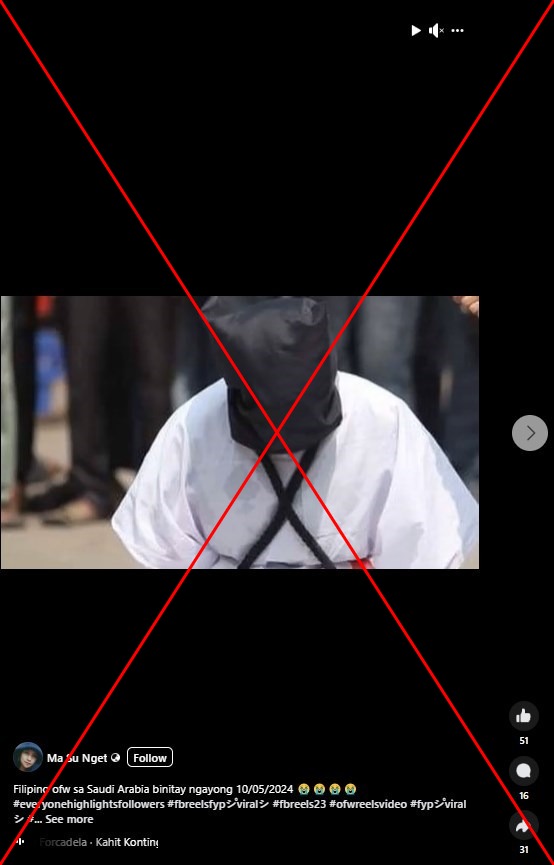In October 2024, Philippine officials confirmed the execution of a Filipino worker in Saudi Arabia, igniting a surge of interest and speculation across social media platforms. However, a widely circulated video purporting to depict the execution actually showed an old image from a protest against capital punishment in Bangladesh, rather than any recent event tied to this case. The video, which attracted significant attention, featured a still image of a masked individual, misleadingly presented as evidence of the Filipino worker’s execution. On social media, many users expressed deep sorrow and confusion, dubbing the incident painful and requesting the removal of the misleading video. Such misinformation underscores the challenges of communication surrounding sensitive issues involving overseas Filipino workers (OFWs) and the implications of capital punishment.
The reported execution took place on October 5, 2024, as announced by the official Saudi Press Agency. Details concerning the identity of the executed Filipino and specifics about their crime remained undisclosed following a request for privacy from the family. The case gained traction after Manila’s appeals for clemency were disregarded, reflecting ongoing tensions and the complexities faced by millions of Filipino nationals working abroad, particularly in the Middle East. As the execution was publicized, the Filipino community reacted strongly, amplifying calls for justice and increased protections for workers overseas, who often find themselves vulnerable due to a lack of legal support.
A review of the contested video revealed that it misleadingly incorporated a previously published image rather than providing any evidence of the alleged execution. Through reverse image searches, the origins of the photo were traced back to a protest held in Dhaka, Bangladesh, on October 15, 2011, where Bangladeshi demonstrators staged a mock execution to protest the beheading of workers in Saudi Arabia. This context, which was absent from the social media posts, illustrates the importance of critically evaluating visual content circulated online, especially in emotionally charged situations, and highlights the repeated patterns of misinformation that can arise in response to tragedies involving overseas workers.
The protest being referenced in the original photo occurred when eight Bangladeshi workers were executed in Saudi Arabia after being convicted of robbery and murder. Such historical instances of capital punishment have led to intense public outcry and scrutiny, both domestically in countries like Bangladesh and internationally, as human rights organizations monitor these events. Reports by Amnesty International revealed that 2024 marked the highest rate of executions in Saudi Arabia since 1990, with over 198 individuals recorded, further intensifying debates about the efficacy and morality of the death penalty in the region.
The spread of misleading content is emblematic of broader concerns about the manipulation of information in the digital age, particularly concerning significant legal and humanitarian issues. The reactions to the video exemplified the emotional weight carried by migrant workers’ families and communities, emphasizing the critical need for accurate information dissemination during crises. This misinformation not only impacts public perception but also complicates the already sensitive narratives surrounding labor migration and the dangers faced by low-skilled workers abroad.
Ultimately, while the tragic execution of the Filipino worker underscores the perils faced by many OFWs, the misrepresentation of the incident through erroneous video content reflects larger societal challenges in grappling with factual information in the digital realm. It invites a call to action for authorities, media, and civil society to promote responsible sharing and consumption of information, ensuring that narratives surrounding vulnerable populations are portrayed with honesty and respect.

